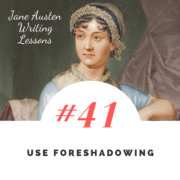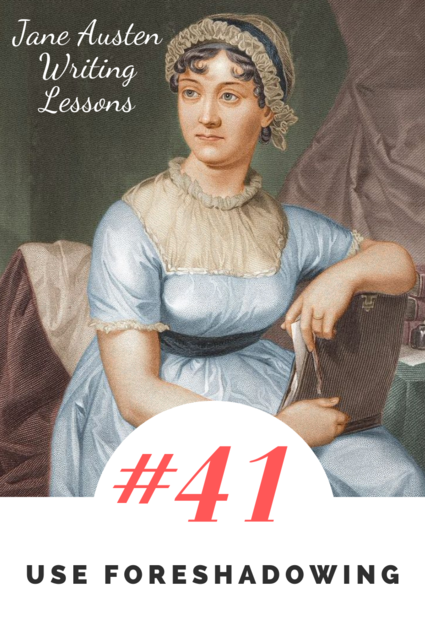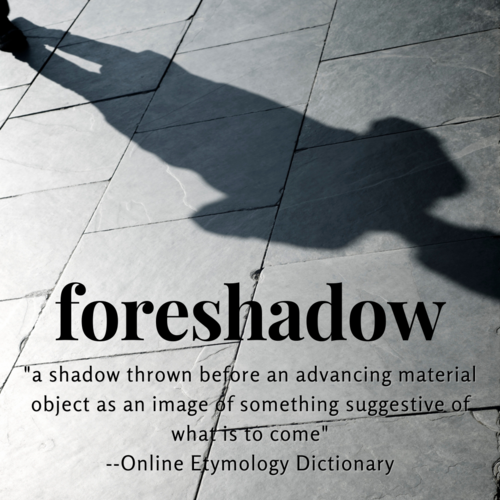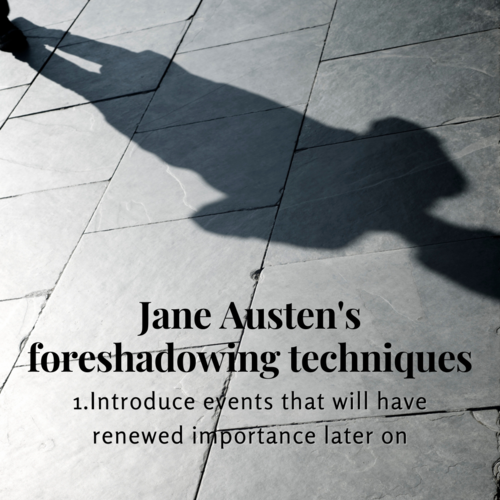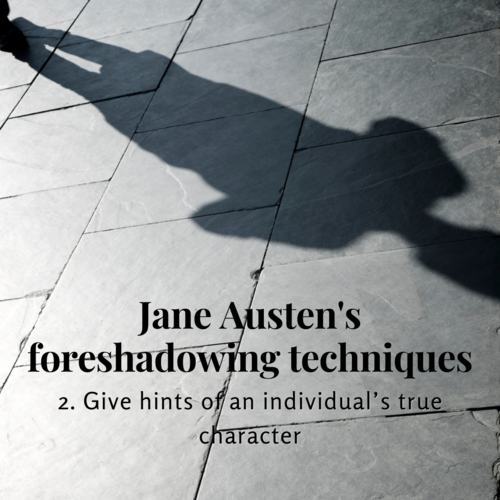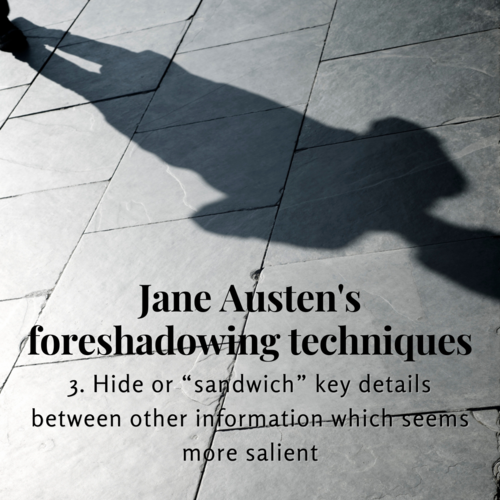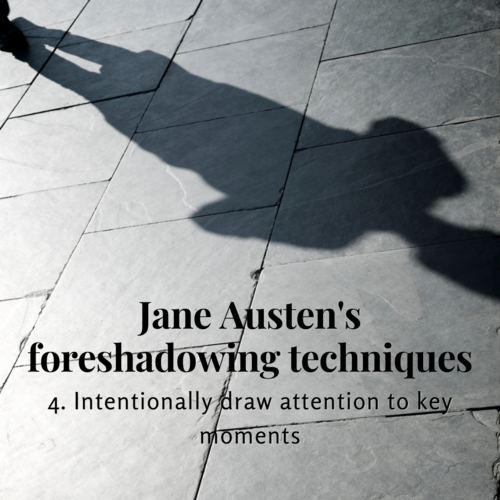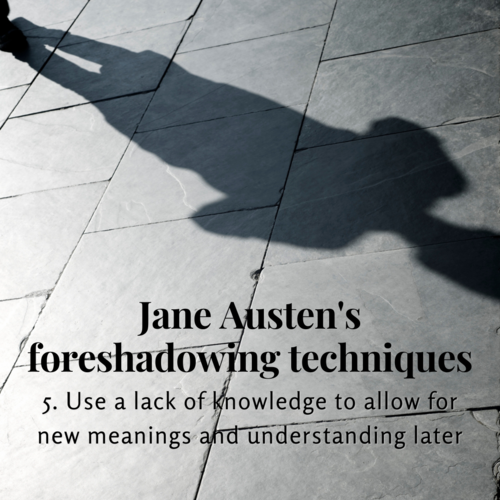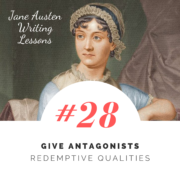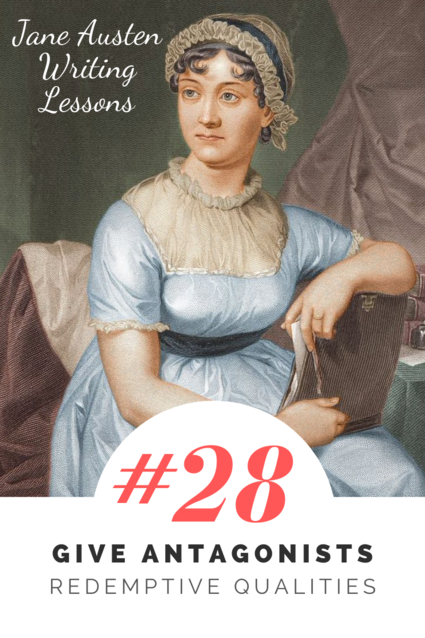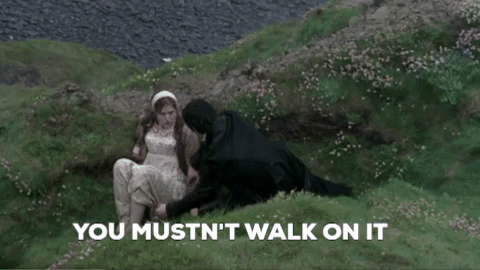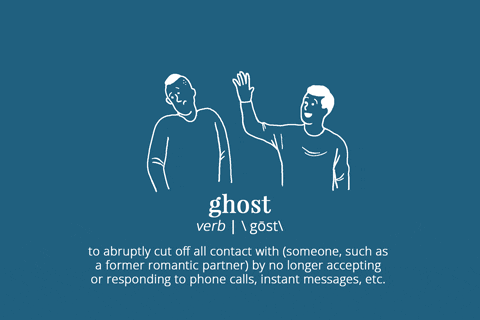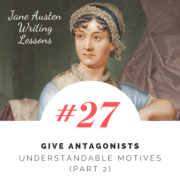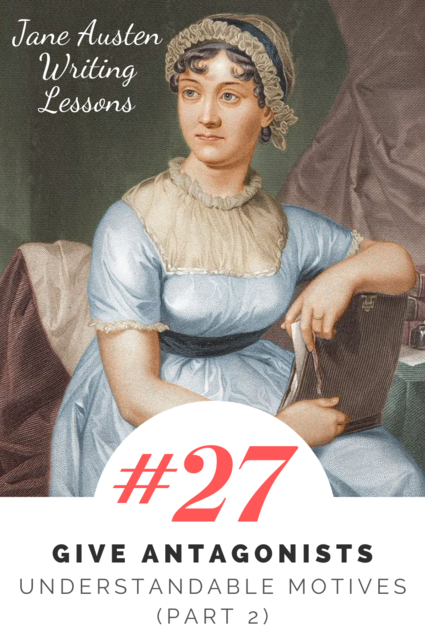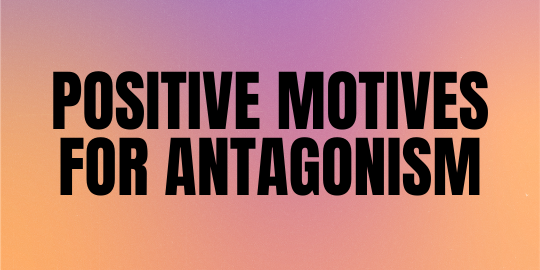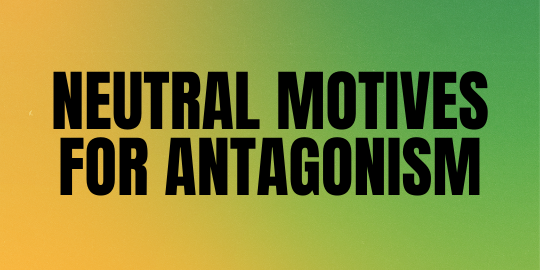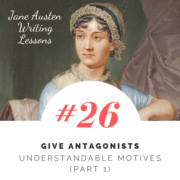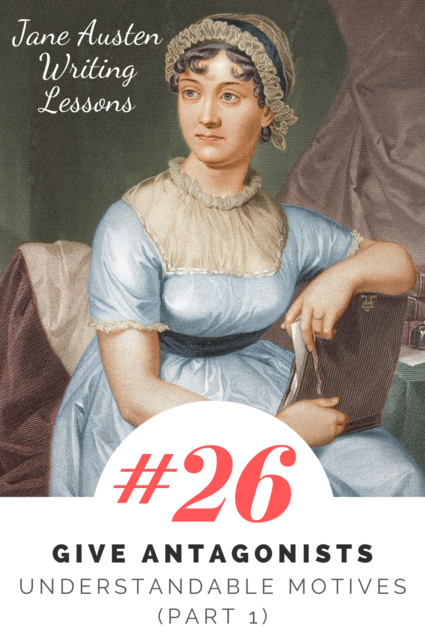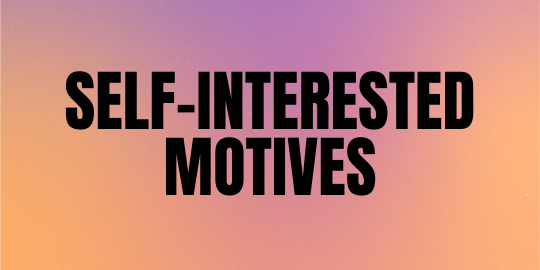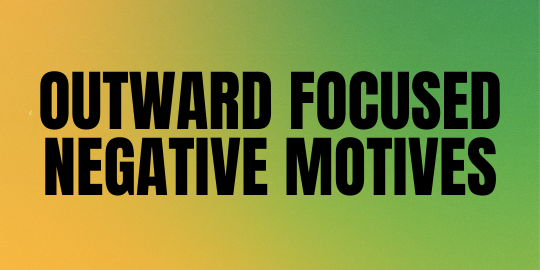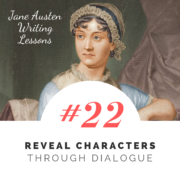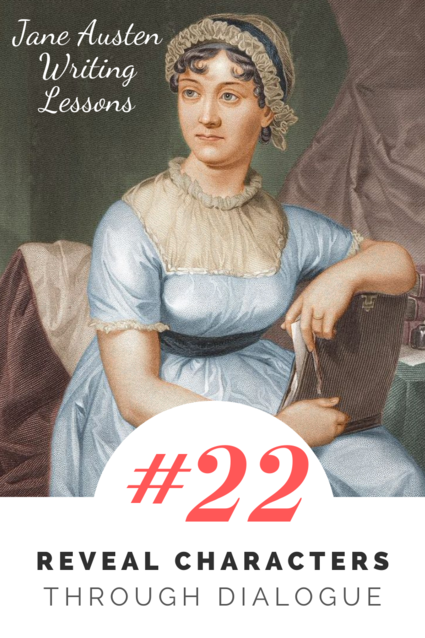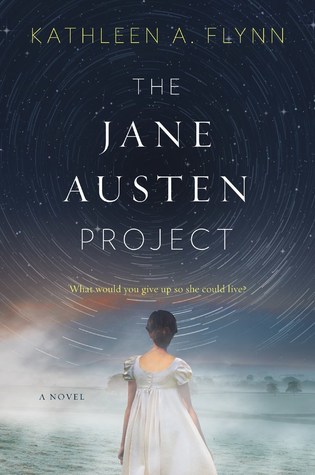#41: Use Foreshadowing
Jane Austen is an expert at foreshadowing. In each of her books, she leaves a trail of breadcrumbs for readers which lead up to her larger discoveries and reveals, whether it’s Mr. Darcy’s surprise proposal (set up by his glances and his attention and his conversation) or the truth about Mr. Wickham (which is hinted at in his words, behavior, and interaction). On a second read, it’s much easier to see these breadcrumbs, yet even if a reader does not recognize these clues as breadcrumbs, foreshadowing is essential for a good reading experience.
It’s easy, as a writer, to throw in something shocking or unexpected or create a huge twist. Yet readers feel cheated—the experience feels lacking and hollow—if these elements are not set up or foreshadowed properly.
Discoveries, especially large discoveries, must be earned. And this applies to any type of discovery, whether it’s a reveal, a twist, a deeper understanding of someone’s character, or the moment when a character obtains a missing piece of information. In the podcast Writing Excuses, the hosts about the importance making these sorts of discoveries “surprising yet inevitable.” Readers don’t necessarily expect these discoveries (and sometimes you don’t want them to expect these discoveries at all), but these discoveries do follow from what is in the narrative.
In this lesson, we’ll talk about five foreshadowing techniques used by Jane Austen, with examples from her first published novel, Sense and Sensibility.
The Techniques of Foreshadowing
The word foreshadowing literally means “before-shadow”: a shadow coming before. According to the Online Etymology Dictionary, “the notion seems to be a shadow thrown before an advancing material object as an image of something suggestive of what is to come.”
So how do you throw these shadows in advance? How do you suggest things without being too heavy-handed and providing the discovery earlier than needed for the character and the plot?
In her novel Sense and Sensibility, Jane Austen uses five major foreshadowing techniques:
- Introduce events that will have renewed importance later on
- Give hints of an individual’s true character
- Hide or “sandwich” key details between other information which seems more salient
- Intentionally draw attention to key moments
- Use a lack of knowledge to allow for new meanings and understanding later
We’ll see how she uses each of these techniques in Sense and Sensibility, but first, a little refresher on the novel.
Jane Austen’s novel Sense and Sensibility features a family uprooted. Two adult daughters, Elinor and Marianne, both have hopes and difficulties in their love lives. Elinor was falling in love with Edward Ferrars before they were uprooted, and it seemed that he reciprocated her affections, but he has not visited them since they moved. Marianne is beginning to fall in love with a dashing young gentleman named Willoughby; a slightly older gentlemen (think upper thirties) named Colonel Brandon favors Marianne but she is not interested in him.
Foreshadowing Technique #1: Introduce events that will have renewed importance later on
In Sense and Sensibility, Colonel Brandon organizes a large party to visit Whitehall. It’s a location of interest that he has a connection to—they could not visit it without him. Elinor and Marianne are invited, as are Sir John, Willoughby, and others.
Just a few minutes before they are to leave for Whitehall, Colonel Brandon receives a letter and announces that they must cancel the trip to Whitehall, for he must go to London immediately. He refuses to tell them what his business is, and refuses to delay his trip.
“We must go [to Whitehall],” said Sir John.—“It shall not be put off when we are so near to it. You cannot go to town till tomorrow, Brandon, that is all.”
“I wish it could be so easily settled. But it is not in my power to delay my journey for one day!”
….“You would not be six hours later,” said Willoughby, “if you were to defer your journey till our return.”
“I cannot afford to lose one hour.”
This event becomes important later on: much later in the book, we discover why Colonel Brandon has gone to London: a young girl in his charge was taken advantage of by Willoughby and is now pregnant, a fact Colonel Brandon reveals after Willoughby breaks Marianne’s heart and becomes engaged to another woman.
Clearly, this event has renewed importance thematically, for the plot, and for the characters later in the story. Yet it’s an important event as the moment as well. Directly after Colonel Brandon’s statement that he cannot delay a single hour, we read:
Elinor then heard Willoughby say in a low voice to Marianne, “There are some people who cannot bear a party of pleasure. Brandon is one of them. He was afraid of catching cold I dare say, and invented this trick for getting out of it. I would lay fifty guineas the letter was of his own writing.”
“I have no doubt of it,” replied Marianne.
This event is important within the chapter because Marianne uses it to judge between Colonel Brandon and Willougbhy. She sees Brandon’s abandoning of their party in a negative light, and sees Willoughby only in a positive light (though ironically, we find out later that it is Willougbhy’s actions that have caused the problem).
Colonel Brandon leaves, and everyone decides to drive their carriages together for pleasure. Marianne joins Willoughby in his carriage, and they soon separate from the rest of the party—for many hours. This could be a little scandalous in and of itself, but he takes her to the home he is to inherit and gives her a private tour, something that is certainly outside of the bounds of proper respectability. This is an action that leads many to assume that Marianne and Willoughby are secretly engaged.
As Jane Austen was crafting her novel, she could have had Colonel Brandon run off to London at any time—it could’ve happened off the page instead of in a scene; it could’ve been simply been mentioned by another character (“Where is Colonel Brandon?” “Oh, he had to leave for London for urgent business.”) Yet there is a power to including an event of importance on the page, in scene, with character dialogue and reactions, and this event is especially effective because it is not only important later on, but it has so much impact on the characters and the plot at the moment.
Foreshadowing Technique #2: Give hints of an individual’s true character
Ultimately, the most interesting discoveries that a character can make in a novel are those which are about the true nature or true character of both others and themselves. Characters, of course, have the possibility to change and transform; an attribute can have both positive and negative aspects, as well as positive and negative potential for the story.
In Sense and Sensibility, Willoughby is truly dashing. He’s charming and romantic, and his attention thrills Marianne.
At one point, Marianne’s mother, Mrs. Dashwood, makes comments about improvements she would like to make to the cottage, in order to make it more comfortable for their family. Willoughby passionately insists that their home is “faultless…I consider it as the only form of building in which happiness is attainable.” He flatters them and their home and earnestly tries to convince Mrs. Dashwood to not make any changes:
“Tell me that not only your house will remain the same, but that I shall ever find you and yours as unchanged as your dwelling; and that you will always consider me with the kindness which has made everything belonging to you so dear to me.”
The entire conversation makes Marianne feel all aflutter. For her it’s incredibly romantic—he speaks with the passion and language of her favorite poets and writers. Yet it hints at his character, it foreshadows his flaws and later choices. He wants to fix the Dashwoods and their home, to create permanence, as if they are a museum exhibit for him to enjoy, rather than living, changing human beings. He wants them for his own purposes and pleasures, without considering what their needs are and what they desire.
Foreshadowing Technique #3: Hide or “sandwich” key details between other information which seems more salient
From the moment since they arrived at the cottage, Elinor has been nursing her heartache, not just for her home at Norland, but also for Edward Ferrars. One day while Elinor and Marianne are taking a walk, they see a man on horseback approaching, who Marianne longingly hopes is Willougbhy, but it is not Willougbhy. It is Edward come to visit. Elinor is a little lost for words, but Marianne is all excitement for her sister. Yet all does not seem well:
He was confused, seemed scarcely sensible of pleasure in seeing them, looked neither rapturous nor gay, said little but what was forced from him by questions, and distinguished Elinor by no mark of affection.
A little later we read:
After a short silence which succeeded the first surprise and inquiries of meeting, Marianne asked Edward if he came directly from London. No, he had been in Devonshire a fortnight.
“A fortnight!” she repeated, surprised at his being so long in the same country with Elinor without seeing her before.
He looked rather distressed as he added, that he had been staying with some friends near Plymouth.
“Have you been lately in Sussex?” asked Elinor.
“I was at Norland about a month ago.”
“And how does dear, dear Norland look?” cried Marianne.
“Dear, dear Norland,” said Elinor, “probably looks much as it always does at this time of the year. The woods and walks thickly covered with dead leaves.”
“Oh!” cried Marianne, “with what transporting sensation have I formerly seen them fall! How have I delighted, as I walked, to see them driven in showers about me by the wind! What feelings have they, the season, the air altogether inspired! Now there is no one to regard them. They are seen only as a nuisance, swept hastily off, and driven as much as possible from the sight.”
“It is not every one,” said Elinor, “who has your passion for dead leaves.”
This passage has a number of salient moments: moments which are relevant and important, moments that draw our attention. First we have Edward’s reticence, which seems even more terrible to the sisters when we find out that he has been in the area for an entire fortnight—two weeks!—without calling on them. And then we have the fact that he has been to their old home, Norland, which is an essential moment for both Elinor and Marianne as they reflect on what they have lost. We can see how both sisters deal with loss and emotions differently by how they each talk about dead leaves.
Yet sandwiched in between the two weeks of Edward not calling on them and the leaves of Norland is a seemingly small, unimportant detail: “he had been staying with some friends near Plymouth.”
Yet this small detail is actual a key moment of foreshadowing, an important detail that is recalled later on, when Elinor meets Lucy Steele. For Lucy is one of the friends from Plymouth, and Lucy dramatically informs Elinor that she has been secretly engaged to Edward for years.
This sort of foreshadowing technique is often used in mystery novels—a small detail is given which does not seem relevant at the time, yet later holds the key to unlocking greater discoveries, greater truths. Yet this technique is just as useful in other genres and types of writing.
“Hiding” these key details between things which seem more important to the reader puts this information on the page but intentionally does not draw our attention to the information—we are meant to notice the information without focusing on it. Austen uses this technique in her novels to help set up big reveals and plot twists. In order for a big reveal, a big twist to be a surprise for readers, we can’t expect it. If too much attention was drawn to a detail such as the friends at Plymouth, we might expect the reveal. Yet if the detail is not there at all, if there is no foreshadowing, then the twist or reveal will feel hollow and inorganic to the story. Thus, details such as this can be sandwiched or hidden in other things to strike the right balance of foreshadowing without lessening later surprises.
Foreshadowing Technique #4: Intentionally draw attention to key moments
While at times it is important to distract or draw attention away from important details, at other times Austen draws attention to key moments.
A few pages after the previous passage, we read:
[Marianne] was sitting by Edward, and in taking his tea from Mrs. Dashwood, his hand passed so directly before her, as to make a ring, with a plait of hair in the centre, very conspicuous on one of his fingers.
Marianne asks Edward if it is his sister’s hair, even though it seems a lighter color:
He coloured very deeply, and giving a momentary glance at Elinor, replied, “Yes, it is my sister’s hair. The setting always casts a different shade on it, you know.”
Elinor had met his eye, and looked conscious likewise. That the hair was her own, she instantaneously felt as well satisfied as Marianne; the only difference in their conclusions was, that what Marianne considered as a free gift from her sister, Elinor was conscious must have been procured by some theft or contrivance unknown to herself.
The ring could have been mentioned in simply a sentence, sandwiched between other details, but here it is like a flag is placed above it, drawing attention to the ring. Not all foreshadowing can be subtle and invisible, or it will not feel like enough foreshadowing. The foreshadowing that should draw our attention should be that which creates emotional resonance for the characters. Here, we see in a single sentence a complicated set of emotions for Elinor: she is flattered and hopeful that Edward has taken a lock of her hair, but a little conflicted that he has done so without her knowing. Taking the time to have focus on the ring and explore Elinor’s emotional reaction is essential in order to set up her emotional reaction the next time the ring is mentioned. Which leads us to the next foreshadowing technique.
Foreshadowing Technique #5: Use a lack of knowledge to allow for new meanings and understanding later
While some foreshadowing is very direct and clear—Colonel Brandon has left for an unknown reason, and later we learn the reason—at other times it is effective for the characters to misinterpret or misunderstand these moments of foreshadowing. This relates to the last lesson, in which we talked about distractions and red herrings, and how they can lead characters to false conclusions. By having some information or events misinterpreted by the characters and/or the reader, it sets up later discoveries while creating greater surprise (and other strong emotions) because we expected a different result.
In Sense and Sensibility, Lucy Steele arrives shortly after Edward leaves. Based on the comments and teasing of other characters, Lucy begins to suspect that Elinor is in love with Edward, and so she makes a rather manipulative play to keep him for herself. She makes Elinor promise not to tell anyone of her secret, and then confides in her, telling her of her secret engagement. It takes some convincing and a fair amount of explanation on Lucy’s part to achieve her ends. Yet Elinor remembers that Edward has stayed in Plymouth with friends, she remembers that he was “sadly out of spirits,” and she begins to believe Lucy. And then she learns the truth of the ring:
“Writing to each other,” said Lucy, returning the letter into her pocket, “is the only comfort we have in such long separations. Yes, I have one other comfort in his picture; but poor Edward has not even that. If he had but my picture, he says he should be easy. I gave him a lock of my hair set in a ring when he was at Longstaple last, and that was some comfort to him, he said, but not equal to a picture. Perhaps you might notice the ring when you saw him?”
“I did,” said Elinor, with a composure of voice, under which was concealed an emotion and distress beyond any thing she had ever felt before. She was mortified, shocked, confounded.
Fortunately for her, they had now reached the cottage, and the conversation could be continued no farther. After sitting with them a few minutes, the Miss Steeles returned to the Park, and Elinor was then at liberty to think and be wretched.
This scene is powerful and full of emotion for both Elinor in the reader. It is a grand, unexpected twist, yet it has been properly foreshadowed, which makes it more powerful, for it feels more true and more terrible as a result. It hearkens back to “hidden” or “sandwiched” details, yet it also draws upon an emotionally powerful object that was a focus in a previous scene yet was misinterpreted. It’s an incredibly effective use of foreshadowing to build to this moment.
Austen uses these foreshadowing techniques in each of her novels to set up key scenes, moments, revelations, and discoveries in a way that creates emotion and resonance for readers.
Foreshadowing is a powerful tool, yet can be tricky to use properly. Often in my own writing, my foreshadow is inadequate in the first draft—either too much, too little, or the wrong techniques in certain moments. For both me and many other writers, it is in revision that the foreshadowing is refined to make it most effective.
Exercise 1: Choose a different Jane Austen novel and find at least three moments of foreshadowing. Which techniques does Jane Austen use and how does this foreshadowing set up later discovery?
Exercise 2: Write a scene in which the main character is surprised by a discovery at the end of the scene. The reader should be surprised as well. This could be any sort of discovery, such as a surprise birthday party, a surprise proposal, or a surprise award at work. Use several different foreshadowing techniques in the scene to hint at the upcoming revelation without giving it away.
Exercise 3: Revising for Foreshadowing.
Take a draft you have written of a short story, novella, or novel. Choose a key moment of discovery, a twist, or a reveal, and then look back to see what moments of foreshadowing you used for this discovery. What different foreshadowing techniques did you use? Could any of these moments of foreshadowing be refined? Are there any points where it more effective to use a different foreshadowing technique? Are there moments when it might be helpful to add foreshadowing?

